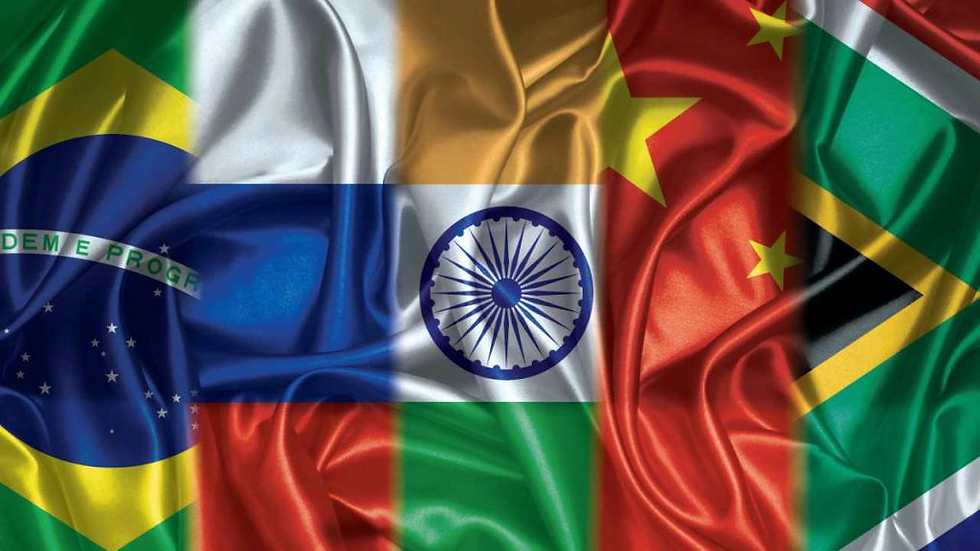What Makes a Product a “Best-Seller” in BRICS Markets?
- Diversitech Global

- Jun 19
- 5 min read
Updated: Jun 23

Cracking the BRICS (Brazil, Russia, India, China, and South Africa) markets requires more than just a good product. It demands a nuanced understanding of local consumers, economies, and cultures. Success hinges on adapting your strategy to meet the specific needs and preferences of each region. Let's explore the key factors that drive product success in these dynamic markets.
Localized Value Proposition

Products that thrive in BRICS aren't simply global offerings; they're tailored to local needs. This means understanding the specific challenges and opportunities within each market. For example, a food product might need to be adapted to local tastes and dietary preferences. A tech product might need to be optimized for the local internet infrastructure. This localization extends beyond just the product itself; it includes marketing materials, customer service, and even packaging. Consider product adaptation to meet local standards.
Affordability & Aspirational Branding

Balancing affordability with aspirational branding is a delicate act. Many consumers in BRICS markets are price-sensitive, but they also desire products that reflect their rising social status. The key is to offer value without sacrificing quality or brand image. This might involve offering smaller package sizes, simplified versions of products, or leveraging local materials to reduce costs. Brands that successfully tap into the aspirations of consumers, while remaining accessible, are more likely to succeed. Think about how leading tool brands balance cost and quality.
Distribution Reach & E-commerce Penetration

Getting your product into the hands of consumers requires a robust distribution network. In some BRICS countries, this might mean partnering with local distributors who have established relationships with retailers. In others, it might mean leveraging the growing e-commerce landscape. E-commerce penetration is rapidly increasing in many BRICS markets, offering a direct route to consumers. However, it's important to consider the challenges of logistics, payment processing, and digital literacy. Consider selling private label products online.
Government Regulations & Protectionism

Navigating the regulatory landscape is crucial for success in BRICS markets. Each country has its own set of regulations regarding product safety, labeling, and import/export. Additionally, some countries have protectionist policies in place to favor local businesses. Understanding these regulations and policies is essential for avoiding costly delays and ensuring compliance. It may be necessary to seek local expertise to navigate these complexities. Be aware of government unity and its impact on trade.
Looking to find a low-risk, high margin product for your E-commerce store? Get started
Trust & Adaptation
Building trust is paramount in BRICS markets, where consumers may be wary of foreign brands. This can be achieved through transparent business practices, strong customer service, and building relationships with local communities. Adapting your business model to align with local customs and values can also go a long way in building trust. This might involve partnering with local influencers, supporting local charities, or simply demonstrating a commitment to the local market. Consider the best items to sell based on local demand.
Successfully selling in BRICS markets requires a long-term commitment and a willingness to adapt. It's not enough to simply translate your existing marketing materials or offer the same products you sell in other markets. You need to understand the unique needs and preferences of local consumers and tailor your strategy accordingly. This requires investment in market research, building local partnerships, and a willingness to experiment.
Here's a simple table illustrating the e-commerce growth in select BRICS nations:
Country | E-commerce Growth Rate (2023-2024) |
|---|---|
Brazil | 22% |
India | 27% |
China | 18% |
South Africa | 15% |
Consider products on Takealot for the South African market.
Wrapping Things Up: What We Learned About BRICS Best-Sellers
So, what’s the big takeaway here? Making a product a best-seller in BRICS markets isn't about one magic trick. It’s a mix of understanding what people in these places really need and want, making sure your product fits their lives, and getting it to them in a way that makes sense. Think about things like how much money people have, what they believe in, and how they like to shop. It’s not just about selling a product; it’s about connecting with people. For our friends in Southeast Asia looking to sell tool sets, remember that quality and a good price go a long way. And hey, if you need a reliable supplier for those tool sets, Diversitech Global has your back. It’s all about being smart, flexible, and ready to meet the market where it is.
Frequently Asked Questions
What makes a product a “best-seller” in BRICS markets?
For a product to truly shine in BRICS markets, it needs to hit a few key notes. First, it's about making sure your product, like our Diversitech Global tool sets, really fits what local folks need and want. This means understanding their culture and daily lives. Second, it's super important to offer good prices while still making people feel like they're getting something special. Think of it as being affordable but also a little bit fancy. Third, you've got to be able to get your product everywhere, whether that's through lots of stores or by being easy to buy online. Finally, knowing the local rules and building trust with customers are big deals. If you can do all that, your product has a great shot at becoming a best-seller.
Need reliable e-commerce product supplier for your store? Let's talk about options
What does “localized value proposition” mean for products like tool sets?
When we talk about “localized value proposition,” it means making sure your product feels like it was made just for the people in that specific country. For example, our Diversitech Global tool sets might be designed to handle the types of jobs or materials common in Brazil, or perhaps come with instructions in different languages for India. It's about more than just translating the box; it's about making the product truly useful and appealing to the local way of life. This helps people connect with your brand and see the real benefit of what you're selling.
What are the main challenges for e-commerce sellers entering BRICS markets with products like tool sets?
Selling products like our Diversitech Global tool sets in BRICS countries means dealing with a few unique challenges. One big one is making sure your prices are right so everyone can afford them, but without making the product seem cheap. Another challenge is getting your products to all the different places people live, especially in big countries with lots of rural areas. Also, each country has its own government rules and ways of doing business, which can be tricky to navigate. And, there's a lot of competition, so building trust and showing people why your product is the best choice is super important.





Comments